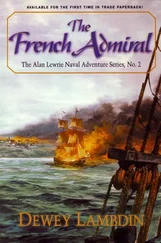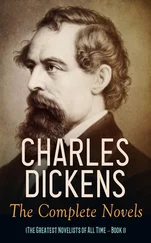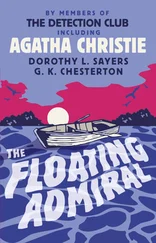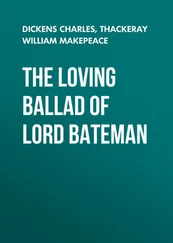Charles Beresford - The Memoirs of Admiral Lord Beresford
Здесь есть возможность читать онлайн «Charles Beresford - The Memoirs of Admiral Lord Beresford» — ознакомительный отрывок электронной книги совершенно бесплатно, а после прочтения отрывка купить полную версию. В некоторых случаях можно слушать аудио, скачать через торрент в формате fb2 и присутствует краткое содержание. Жанр: foreign_antique, foreign_prose, на английском языке. Описание произведения, (предисловие) а так же отзывы посетителей доступны на портале библиотеки ЛибКат.
- Название:The Memoirs of Admiral Lord Beresford
- Автор:
- Жанр:
- Год:неизвестен
- ISBN:нет данных
- Рейтинг книги:5 / 5. Голосов: 1
-
Избранное:Добавить в избранное
- Отзывы:
-
Ваша оценка:
- 100
- 1
- 2
- 3
- 4
- 5
The Memoirs of Admiral Lord Beresford: краткое содержание, описание и аннотация
Предлагаем к чтению аннотацию, описание, краткое содержание или предисловие (зависит от того, что написал сам автор книги «The Memoirs of Admiral Lord Beresford»). Если вы не нашли необходимую информацию о книге — напишите в комментариях, мы постараемся отыскать её.
The Memoirs of Admiral Lord Beresford — читать онлайн ознакомительный отрывок
Ниже представлен текст книги, разбитый по страницам. Система сохранения места последней прочитанной страницы, позволяет с удобством читать онлайн бесплатно книгу «The Memoirs of Admiral Lord Beresford», без необходимости каждый раз заново искать на чём Вы остановились. Поставьте закладку, и сможете в любой момент перейти на страницу, на которой закончили чтение.
Интервал:
Закладка:
"Row!" I shouted. "Why don't you go on rowing?"
"We can't pass the admiral, sir," said the coxswain. And that was my first lesson in naval etiquette.
As we drew near to the ships, there arose a great tumult of shouting, and I could see the men running to and fro and racing aloft, and presently they stood in rows along the yards, manning yards in honour of the arrival of the admiral.
The neatness and order of the stately ships, the taut rigging, the snowy sails, the ropes coiled down neatly on deck: these things left an abiding impression upon my youthful mind.
It was in the winter of the same year, 1858-9, that a certain young soldier, who had fought throughout the Indian Mutiny with great gallantry and conspicuous ability, came to his home in County Waterford on his first furlough. He was Lieutenant Roberts, V.C.; now Field-Marshal Earl Roberts of Kandahar.
"During the winter months," he writes, "I hunted with the Curraghmore hounds, and was out with them the day before Lord Waterford was killed. We had no run, and at the end of the day, when wishing us good-bye, he said 'I hope, gentlemen, we shall have better luck next time.' 'Next time' there was 'better luck' as regarded the hunting, but the worst of all possible luck for Lord Waterford's numerous friends; in returning home after a good run, and having killed two foxes, his horse stumbled over quite a small ditch, throwing his rider on his head; the spinal cord was snapped, and the fine sportsman breathed his last in a few moments." ( Forty-one years in India . By Field-Marshal Lord Roberts of Kandahar. Bentley. 2 vols. London, 1897, p. 451, vol. 1.)
My father, the Rev. Lord John Beresford, succeeded to the marquisate. In the same year, 1859, I joined the Naval Service. I remember, some years afterwards, thinking with some degree of envy of my two younger brothers, each of whom had three hunters, while I was only the "blood-boat" (the jolly-boat bringing beef to the ship) midshipman of a man-of-war.
At that time the Navy consisted of both sailing ships and steamships. Steam was used as seldom as possible in those ships which were fitted with masts and yards. The flagships of the Cape of Good Hope, East Indies and China, South-east Coast of America, Pacific and North America and West Indies stations were all sailing ships. The Navy List of 1859 gives the names of no less than 548 "effective" ships, together with a list of 185 "steam gunboats" and a list of 121 vessels employed in Harbour Service.
That there was so large a number of "steam gunboats" was the result of the Crimean war, during which very many were built for service in the Baltic. There is a story that an admiral returning from foreign service noticed eight gunboats aground on the Spit. Upon his inquiry, he was informed by one of his crew that they were "commanded by these old Baltic War mates and second masters, the sort what knows nothing and fears nothing." But of the sailing master there will be more to say.
The line-of-battle sailing ships which were flagships on naval stations abroad were: – the Boscawen , 70 guns, Rear-Admiral Hon. Sir Frederick W. Grey, Cape of Good Hope; Calcutta , 84, Rear-Admiral Sir Michael Seymour, East Indies and China; Cumberland , 70, Rear-Admiral Sir Stephen Lushington, S.E. Coast of America; Ganges , 84, Rear-Admiral R. L. Baynes, Pacific; Hibernia , 104, Rear-Admiral H. J. Codrington, Malta; Indus , 78, Vice-Admiral Sir Houston Stewart, North America and West Indies.
The number of ships distributed among the various stations in 1859 was no less than 130. "Trade follows the flag."
East Indies and China… 36
Pacific...... 12
W. Coast of Africa… 17
N. America and W. Indies… 14
S.E. Coast of America… 13
Mediterranean..... 22
Cape of Good Hope… 5
Australia...... 4
River Gambia..... 1
Channel...... 6
The presence of so large a force in Chinese waters was due to the affair of "the lorcha Arrow ," which occurred on 8th October, 1856, in the Canton River. The Arrow , a small vessel flying the British flag, was captured by the Chinese authorities and the crew were arrested on a charge of piracy. In the result, Admiral Sir Michael Seymour bombarded Canton. Operations were suspended during the Indian Mutiny, to be resumed in 1858, with the assistance of France. Canton was captured, and the treaty of Tien-Tsin was concluded with China. It was not, however, ratified, and in June, 1859 – six months before I entered the Navy – hostilities were resumed, to terminate in the burning of the Summer Palace at Pekin, and the subsequent signing of a convention.
CHAPTER II
THE BEGINNING OF SERVICE
I was sent to sea for the somewhat vague reasons which so often determine a boy's future. There was a belief that I was of a delicate constitution, and an impression – perhaps justified – that I needed discipline. I was sent to Bayford School in England when I was very young, together with two of my three brothers. We were known as the three "wild Irish." Among my schoolfellows were the present Lord Rosebery, James Lowther, Lord Newport, Lord Claud Hamilton and Lord George Hamilton, Lord Worcester, and Lord Methuen. From Bayford I went to the educational establishment of the Rev. David Bruce Payne (afterwards Canon) at Deal, where I first saw the ships of the Royal Navy, as already related. Canon Payne was a splendid type of the best British clergyman, and I had a great respect and affection for him. I was afterwards a pupil of the Rev. Mr. Foster, of Stubbington, Fareham.
I received my nomination from Captain Charles Eden, C.B., and qualified as a naval cadet on 12th December, 1859. The qualifying certificate must be signed by the candidate; a regulation which, simple as it seems, was nearly my undoing.
"Do you always sign your Christian name William with one 'l'?" asked the examiner.
It was a critical moment. Irish resource supplied the answer.
I said, "Only sometimes, sir."
The examiner smiled grimly. But he passed me. It was my first narrow escape in the Navy.
I have the faded blue paper before me as I write. The signature, laboriously written in a round hand, is "Charles Wiliam Delapoer Beresford."
The qualifying examination was not very formidable in those easy days. The knowledge required consisted of a little "English," less French or Latin (with the "aid of a dictionary"), a "satisfactory knowledge of the leading facts of Scripture and English History," a certain amount of geography, and an elementary knowledge of arithmetic, algebra and Euclid. The preliminary course of education afforded to "Volunteers," as the naval cadets used to be called, at the Royal Naval College, Portsmouth, had been abolished in 1837, and for the next twenty years cadets were sent straight to sea. In 1857, cadets were entered for training in the Illustrious , Captain Robert Harris. The number of cadets exceeding the accommodation in the ship, the Britannia was commissioned on 1st January, 1859, by Captain Harris. But not for many years did the entrance examination become the competitive ordeal for which cramming is the only preparation, known to the present generation. But I remember Admiral William Bowles, commander-in-chief of Portsmouth, taking me kindly by the shoulder and saying, "Well, my little man, you are very small for your age. Why are you being sent to sea?"
I said that I wanted to go to sea.
"Are you good at your books?" asked the admiral. "Bless me, I know many an admiral who could not pass the examination you have passed. Good Heavens, what they expect boys to do nowadays!"
The Britannia was then moored at the entrance to Haslar Creek in Portsmouth Harbour, where the depot ships of the submarines are moored to-day. Alongside her, in the following year, lay the training frigate Eurydice , which was afterwards capsized off the Isle of Wight on 24th March, 1878, when 318 lives were lost out of a complement of 320. I learned to heave the lead from the chains of the Eurydice .
Читать дальшеИнтервал:
Закладка:
Похожие книги на «The Memoirs of Admiral Lord Beresford»
Представляем Вашему вниманию похожие книги на «The Memoirs of Admiral Lord Beresford» списком для выбора. Мы отобрали схожую по названию и смыслу литературу в надежде предоставить читателям больше вариантов отыскать новые, интересные, ещё непрочитанные произведения.
Обсуждение, отзывы о книге «The Memoirs of Admiral Lord Beresford» и просто собственные мнения читателей. Оставьте ваши комментарии, напишите, что Вы думаете о произведении, его смысле или главных героях. Укажите что конкретно понравилось, а что нет, и почему Вы так считаете.












